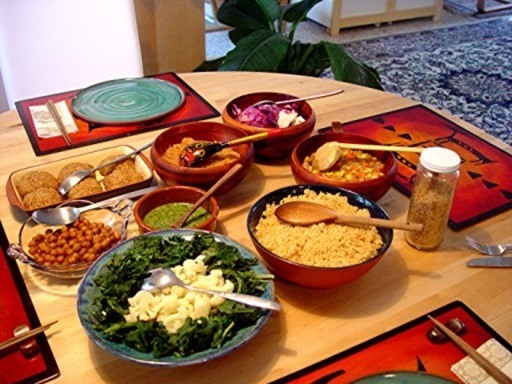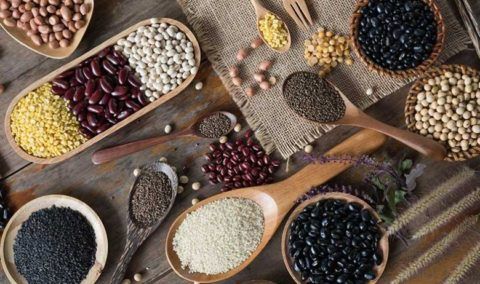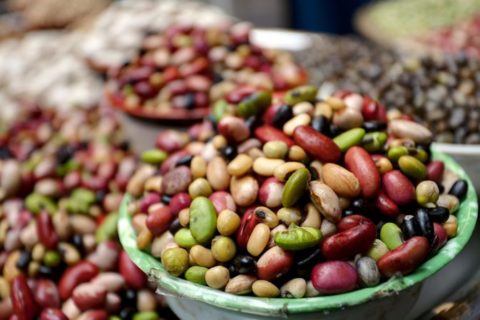Macrobiotic diet | advantages and disadvantages
The macrobiotic is in vogue, Uma Thurman, Madonna or Naomi Campbell are some of the famous who follow the macrobiotic diet. What is this type of diet and what are its advantages and disadvantages?

In another article we talked about the book "The prodigious enzyme" by Hiromi Shinya, today we tell you more about the advantages and disadvantages of the macrobiotic diet.
What is the macrobiotic diet?
The concept has already more than a century. In the 19th century, a Japanese doctor named Sagen Ishizuka founder of Shokuiku helped sick people to recover, among other things, by prescribing a diet based on seasonal natural foods with a balance between sodium and potassium.

Macrobiotic feeding goes beyond food , is a whole philosophy, it is a lifestyle, it uses food as a form of medicine . His followers believe that if we eat unprocessed food our bodies will be healthier.
The macrobiotic diet divides food into two classes, there are ying foods (which have a passive role) and are yang foods (which have an active role). A correct diet is based on the balance between these two types of food.
According to its followers, this type of food is beneficial for the organism since it mainly consumes natural products (also recommended in the Mediterranean diet as legumes, vegetables and cereals) and do not consume products with excess fats or sugars.
Food should be eaten in the season in which they grow. In summer and spring the meals are lighter and in autumn-winter more substantial.
The Macrobiotic Diet promises a "long life". Developed in the East for millennia, this food and spiritual program was popularized in the West by Japanese physician Nyioti Sakurazawa at the beginning of the last century.
Reconnected to the lifestyle of Buddhist monks, the Macrobiotic Diet is based on a fundamental objective: to achieve the balance between Yin and Yang , necessary for the well-being of the body and the spirit.If small amounts of fish and shellfish are allowed.
Disadvantages of the macrobiotic diet
Like any other diet, the macrobiotic diet also has its disadvantages, mainly related to some vitamin deficiencies.

- Being a broader concept than mere feeding, not everyone understands this diet. Often those who start a macrobiotic diet are confused in the choice of food, it is not easy to initially find the balance between yang food and ying food.
- There are certain very common foods in the diet such as potatoes, tomatoes, milk, sweets or aubergines that in the macrobiotic diet are restricted , not everyone gets used to it since there are people who eat potatoes or tomatoes several days a week.
- This diet is a change in Feeding any person to, and requires careful planning to ensure that the body gets all the necessary nutrients. It requires adapting recipes, replacing some foods and getting used to new flavors.
- On the other hand I lack of many nutrients , such as dairy products and meat and vegetables. Consequent deficiencies of iron, vitamins and calcium can cause anemia and osteoporosis.
- Also the absence of animal proteins , characterized by a high biological value, is very important for muscles.
- In addition, this is a diet with a high iodine content and therefore poses a potential danger to those suffering from hyperthyroidism.
What are passive and active foods?
To know how to apply or how to make a macrobiotic diet you should know about everything , equlibrar foods that as we have already mentioned are divided between active foods (yang) and passive foods (ying):

Food assets
These are the ones that give you the daily energy , they are the cereals like oats, wheat, rye, barley, corn, millet, brown rice. Also algae, vegetables, legumes , fish Steam cooked and vegetables should be possible without pesticides , organic farming.
Passive Foods
These are taken in moderation. They are the ones that eat you reduce energy. Like some fruits like banana, mango, plums, vegetables such as potatoes, garlic , tomato. The white bread , the meat, the processed foods, the dyes, the sausages . Eggs, preserves.Therefore, in place of quantity, the quality and type of individual foods is important . A proportion between the different types of food must be respected at each meal, summarized with the so-called " Kushi pyramid ":
- 50% - Whole grains in grains
- 30% - Vegetables (raw or cooked)
- 10% - Vegetable proteins (legumes) and, only occasionally, fish
- 10% - Fruits and seaweed
Below you will find a full description of the food allowed by the macrobiotic and forbidden diet:
Allowed foods :
- Legumes (main protein source that replaces meat and eggs)
- Whole grains (brown rice, barley, spelled, oats, millet)
- Vegetables (both raw and cooked)
- Algae
- li>
- fruit
- vegetables
- Rice milk, tofu, tofu
- Olive oil or seed
- Salt of integral sea
- Oil seeds (pumpkin, flax and sunflower)
- miso
- Soy sauce
- Green tea
Food to be consumed only occasionally :
- fish
- White meat
- Dried fruits
- Whole wheat pasta and couscous
Forbidden food :
- Refined or industrially produced foods (pasta, baked goods, sweets, sugar, honey, broth cubes, industrial salt)
- Foods that contain excess Yin or Yang (meat, tomatoes, mushrooms)
- Exciting (coffee)
- Vegetables containing alkaloids (eg potatoes, tomatoes, eggplant)
- Tropical fruit such as mango and papaya
- Meat, eggs, sausage, game
- Milk and dairy products of animal origin
- Soy milk (as a soy product)
- Wine vinegar
The philosophy of the macrobiotic diet also provides some tips on preparation ny the consumption of meals :
- Use natural and ecological cooking utensils (eg wood and terracotta)
- Cooking less in summer and more in winter
- Consuming the fruit with the peel and away from the meals
- Chewing carefully
You also you may be interested
- Ibuprofen and alcohol
If you liked the article you can click on the button Facebook, Twitter or Google+, (just below the page), you will help me spread the article. Thanks for reading Blogmedicina.com.


